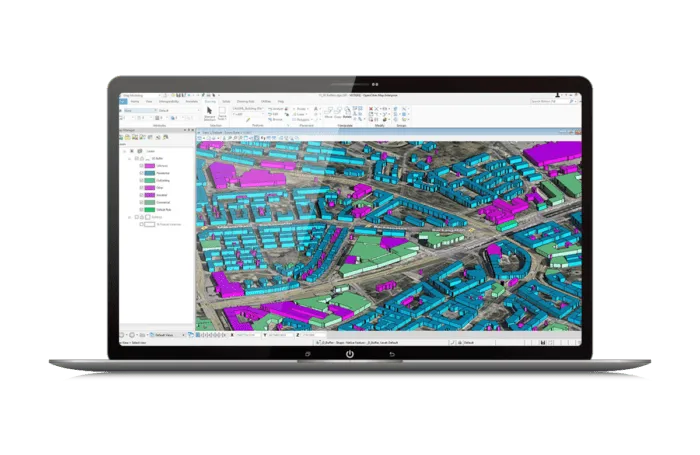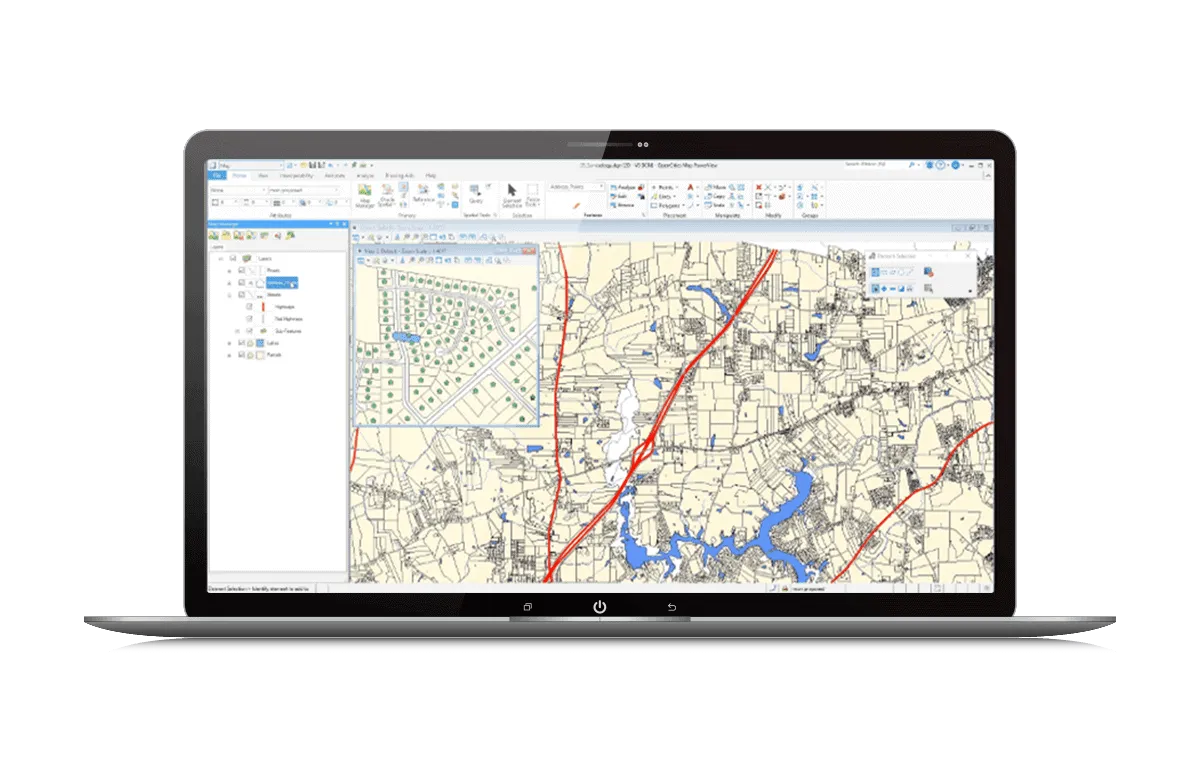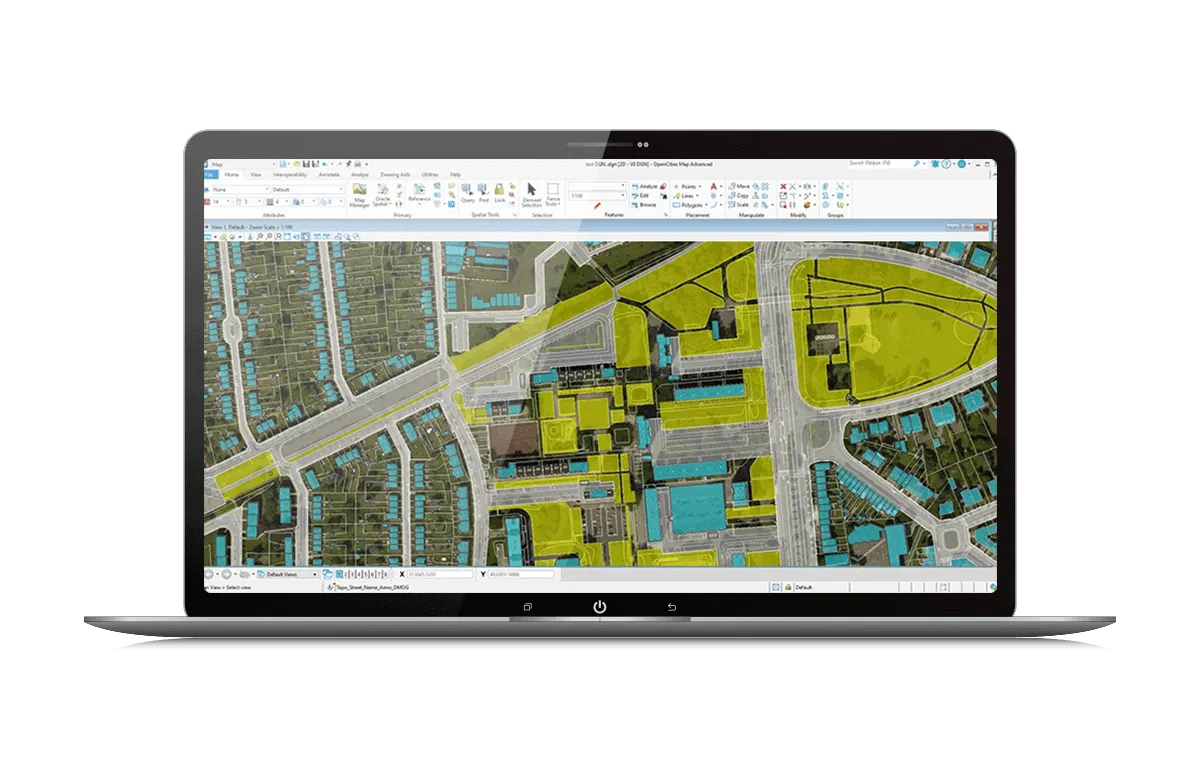OpenCities Map products seamlessly and intuitively integrate with the most common spatial databases including Oracle Spatial, SQL Server Spatial, PostgreSQL (PostGIS), and Esri (FGBD, ArcGIS Server and online).
Vendor
Bentley Systems
Company Website



What is OpenCities Map?
Efficiently document and model assets in a 2D or 3D geospatial environment. OpenCities Map products seamlessly and intuitively integrate with the most common spatial databases including Oracle Spatial, SQL Server Spatial, PostgreSQL (PostGIS), and Esri (FGBD, ArcGIS Server and online). Establishing a single source of truth for your entire 2D and 3D dataset provides up-to-date data for everyone who needs access.
What is OpenCities Map PowerView?
OpenCities Map PowerView enables you to view map assets and perform light 2D feature acquisition and editing. It supports GPS and editing capabilities, making it ideal for field-based operations that require feature editing. It is an entry-level product to view and edit 2D geospatial information. OpenCities Map PowerView offers placement methods that convert CAD element creation tools into feature-based element creation tools. CAD users can continue to use familiar MicroStation capabilities to create feature-based map elements without learning a new workflow. You can also create in-house placement methods for more specific needs.
What is OpenCities Map Advanced?
OpenCities Map Advanced includes a rich set of capabilities that substantially increase productivity by enabling feature-based modeling workflows through its schema file. It allows you to define a set of features to be captured along with their related properties, symbology, annotation, and behaviors. By extending the MicroStation DGN format with XFM, OpenCities Map Advanced provides an environment that ensures geometric and business property accuracy while still allowing access to powerful MicroStation tools. OpenCities Map Advanced offers placement methods that convert CAD element creation tools into feature-based element creation tools. CAD users can continue to use familiar MicroStation capabilities to create feature-based map elements without learning a new workflow.
What is OpenCities Map Ultimate?
Full power of MicroStation, which includes all of the 3D editing and solid modeling tools, OpenCities Map Ultimate gives you access to a full collection of spatial analysis and presentation capabilities using 2D and 3D data. This includes the ability to create buffers around objects, perform topology overlays, create thematic 2D and 3D maps, detect 3D collisions, as well as capabilities to perform shadow and solar analysis. Work with reality data such as raster, STM, point cloud, and reality meshes to bring context to streamline workflows, simplify decision-making and ensure efficient project completion. OpenCities Map Ultimate provides high-level tools to work with reality data and extract information from it. You can easily add semantic information to 3D reality meshes using the classification feature.
Capabilities
Define a Feature Data Model with Business Properties Rich set of capabilities that substantially increase your productivity by enabling feature-based modeling workflows through its schema file. The desktop software allows you to define a set of features to be captured along with their related properties, symbology, annotation, and behaviors. Connect to the Most Common Spatial Database Edit, maintain, and manage your 3D city model data including unstructured and structured data such as geospatial, architectural, and engineering designs, point clouds, and reality meshes. Seamlessly integrate with the most common spatial databases. Customizable Feature-oriented Placement Methods Convert CAD element creation tools into feature-based element creation tools. You can continue to use familiar MicroStation capabilities to create feature-based map elements without learning a new workflow. You can also create in-house placement methods for more specific needs. Unifies 2D and 3D Spatial Information Ensures data integrity and enforces business rules, as well as integrates geospatial information. Preserve CAD Standards to Create Intelligent GIS Objects Generates highly accurate spatial data for infrastructure workflows. Increase Interoperability Integrates with the most common spatial databases and data formats. Accelerate Digital Maturity Smartly convert CAD drawings into geospatial features and upload them in a spatial database.